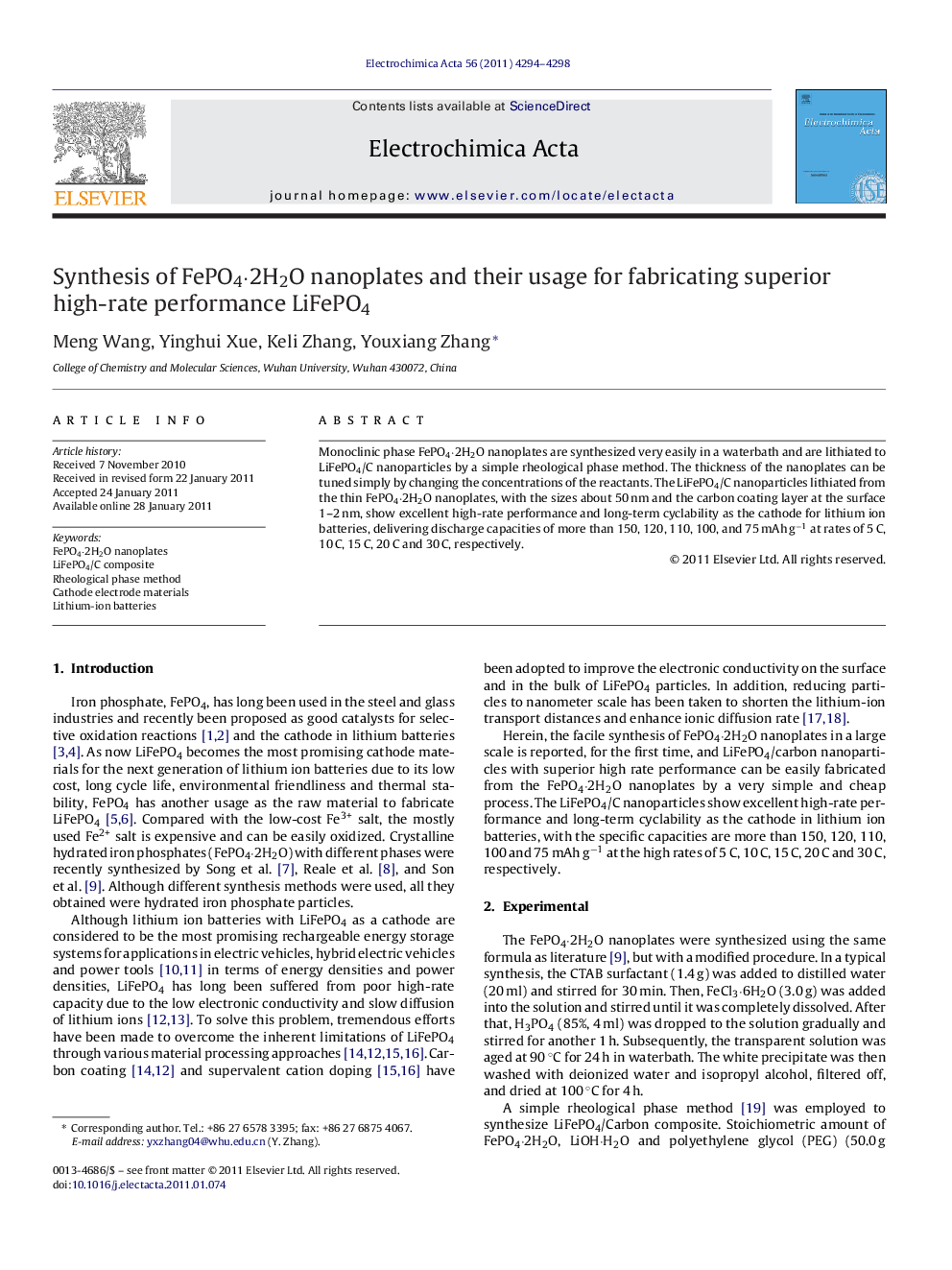| Article ID | Journal | Published Year | Pages | File Type |
|---|---|---|---|---|
| 190299 | Electrochimica Acta | 2011 | 5 Pages |
Monoclinic phase FePO4·2H2O nanoplates are synthesized very easily in a waterbath and are lithiated to LiFePO4/C nanoparticles by a simple rheological phase method. The thickness of the nanoplates can be tuned simply by changing the concentrations of the reactants. The LiFePO4/C nanoparticles lithiated from the thin FePO4·2H2O nanoplates, with the sizes about 50 nm and the carbon coating layer at the surface 1–2 nm, show excellent high-rate performance and long-term cyclability as the cathode for lithium ion batteries, delivering discharge capacities of more than 150, 120, 110, 100, and 75 mAh g−1 at rates of 5 C, 10 C, 15 C, 20 C and 30 C, respectively.
Research highlights► Monoclinic phase FePO4·2H2O nanoplates are synthesized in waterbath. ► The thickness of the FePO4·2H2O nanoplates can be easily tuned. ► FePO4·2H2O nanoplates are lithiated to LiFePO4/C nanoparticles. ► The LiFePO4/C nanoparticles have sizes ∼50 nm, with carbon coating layer ∼2 nm. ► The nanoparticles show excellent high-rate performance and long-term cyclability.
